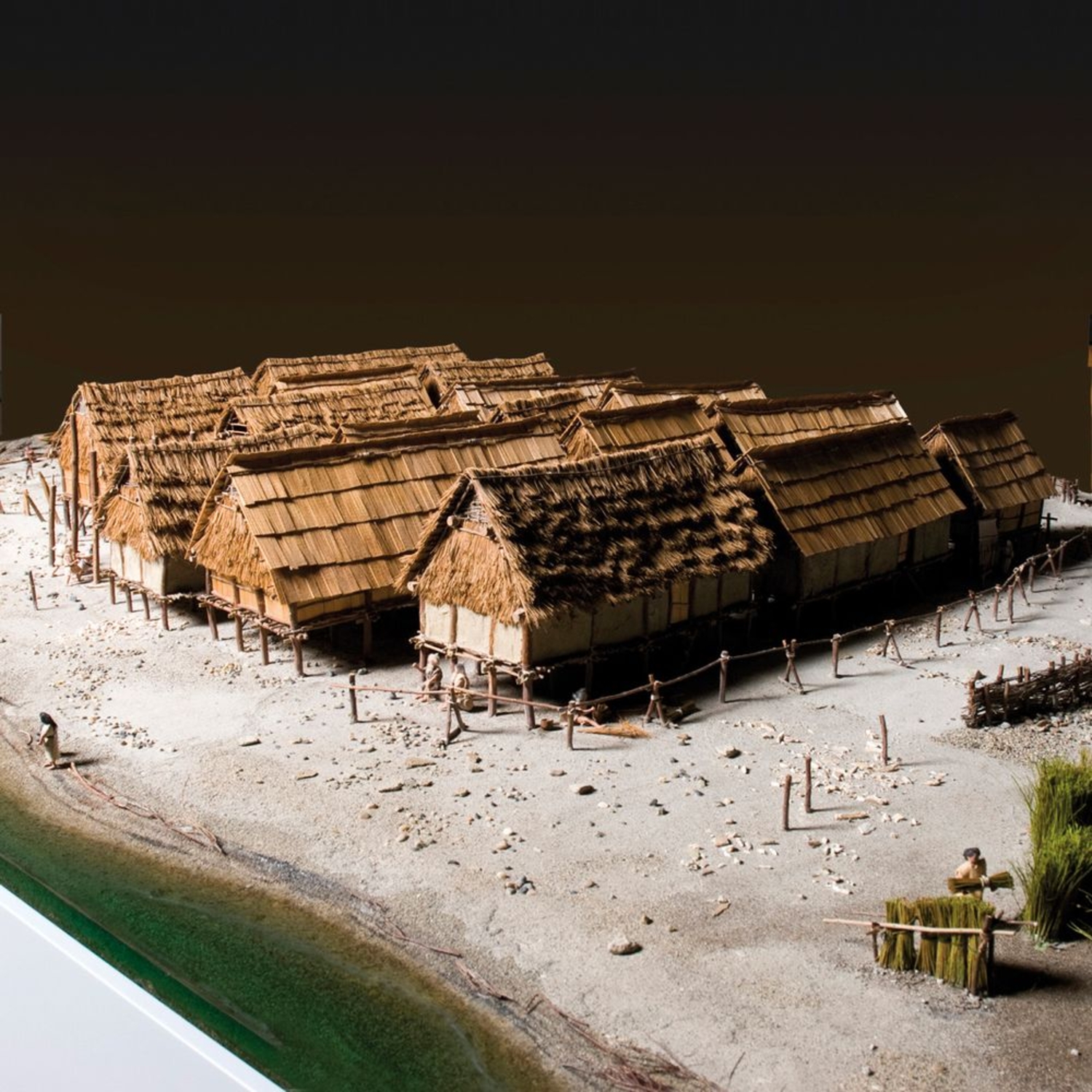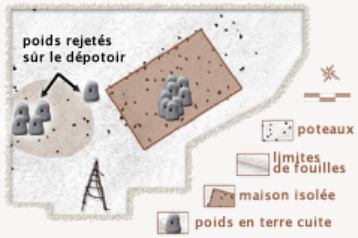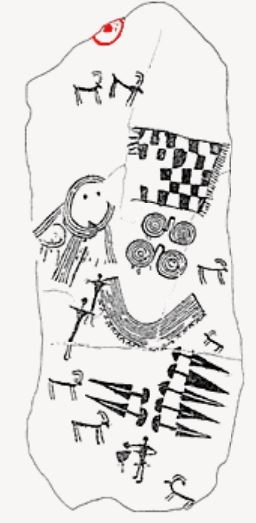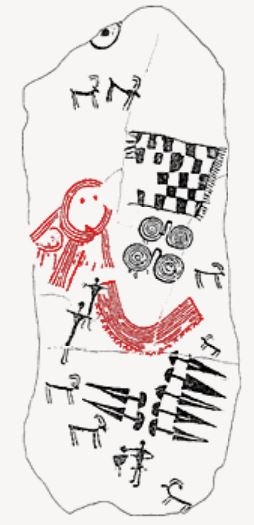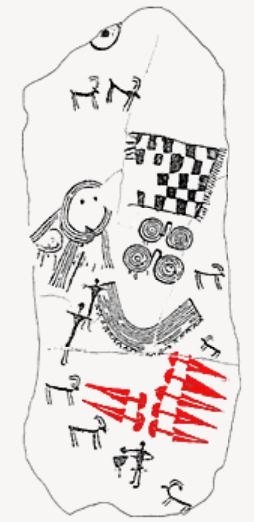- Home
- The village
- An unequal society
- Consecration of textiles fabrics
In front of the isolated Chalain 19 house, several broken loom weights were discarded in the vicinity of the waste area.
In addition, eight unbroken terracotta loom weights were found in the center of the house, probably where a vertical loom was located. In light of this, it appears certain that from 31st to the 30th century BCE, weaving activities were centered exclusively on the isolated house. One could imagine this was a workshop, located slightly outside the village, which was used by all. In fact, this is not the case at all: this is definitely a residence, but one that is nevertheless set apart from the other structures by exclusive activities and tools.
Location of the waste area in the map of the isolated house in Chalain 19 and its surroundings, showing the position of the terracotta loom weights.
Source: P. Pétrequin
Location of the loom in the map of the isolated house in Chalain 19 and its surroundings, showing the position of the terracotta loom weights.
Source: P. Pétrequin
Engraving showing a weaving loom. La Grande Roche, Naquane, Val Camonica (Northern Italy).
Drawing by A. Priuli, 1992.
Textiles for special occasions
In this period, woven linen—and, more rarely, woven linden fiber—does not seem to have been used for everyday clothing. This is shown by the frozen body of Ötzi, the Neolithic man discovered in 1991 in a glacier on the border between Italy and Austria. His clothing was made out of leather, while his rain cape and hat were made of woven grasses.
What is more, Neolithic textiles are not large, and appear to have greater ceremonial attributes than normal clothing.
And it is probably no accident that textiles and scenes depicting weaving are engraved on rocks in the Val Camonica in northern Italy, in an area reserved for gods and supernatural powers.
Then the loom in the Chalain 19 house confirms the social status of its owner.
Everyday items of clothing.
Watercolor by G. Monthel.
Fragment of woven linen.
Chalain 19, 31st century BCE.
The Borno stele
At the top of the Borno stele, located in the Val Camonica, there is a representation of a solar disc, and drawings of copper spirals, lunulae and daggers. To the right is an image of a piece of cloth with fringe and checkerboard pattern. There is no doubt that at the end of the 4th millennium, the most valuable textiles were reserved for supernatural powers and for great men.
Borno stele, Val Camonica (Northern Italy).
Source: P. Frontini, 1994.
Solar disc on the Borno stele, Val Camonica (Northern Italy).
Source: P. Frontini, 1994.
Spirals on the Borno stele, Val Camonica (Northern Italy).
Source: P. Frontini, 1994.
Lunulae on the Borno stele, Val Camonica (Northern Italy).
Source: P. Frontini, 1994.
Daggers on the Borno stele, Val Camonica (Northern Italy).
Source: P. Frontini, 1994.
Piece of cloth on the Borno stele, Val Camonica (Northern Italy).
Source: P. Frontini, 1994.
